A couple of years back, I did a blog post with a video of a bowling ball exploding. It’s a fun test to show guests who visit our connector lab. Of course, we also do a joist hanger or holdown test to demonstrate a real test used to load rate our products. The problem is some of our tests just aren’t too exciting to the general population. It’s a bit anticlimactic when the wood slowly crushes or the fasteners withdraw until the test specimen just can’t take any load. But bowling balls explode, and explode fast!
In the last couple of months, our connector test lab ran a number of built-up post compression tests. We were looking for data to compare the performance of built-up posts whose members were fastened with connectors (nails, screws, or bolts) to posts that were glued together.
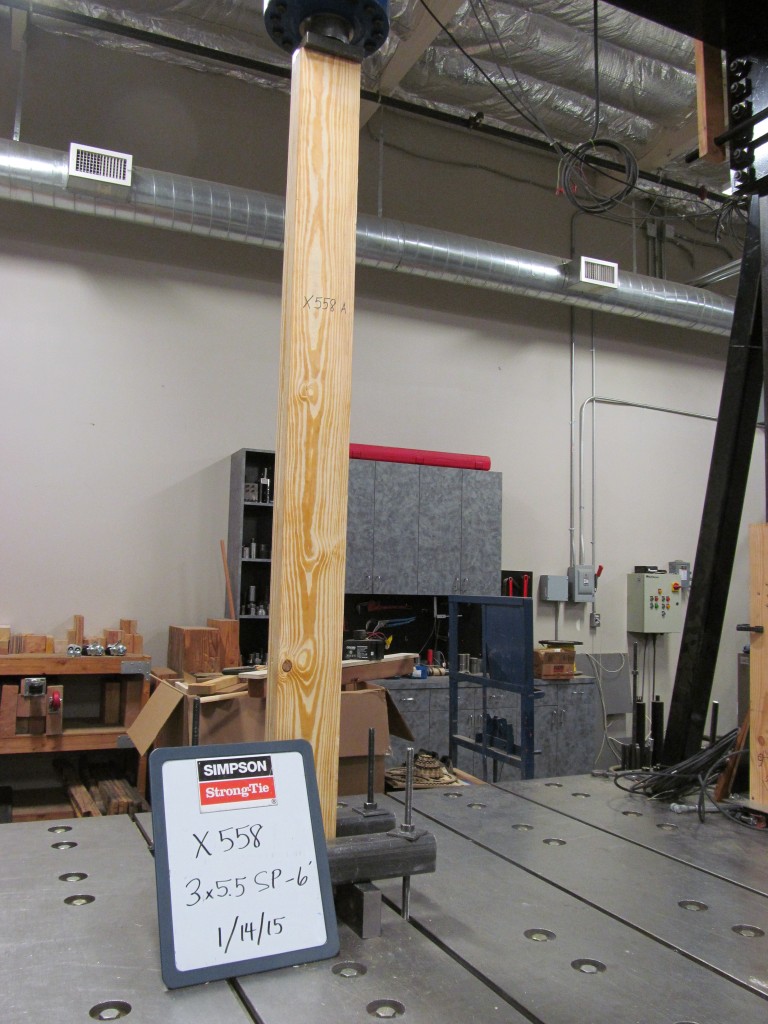
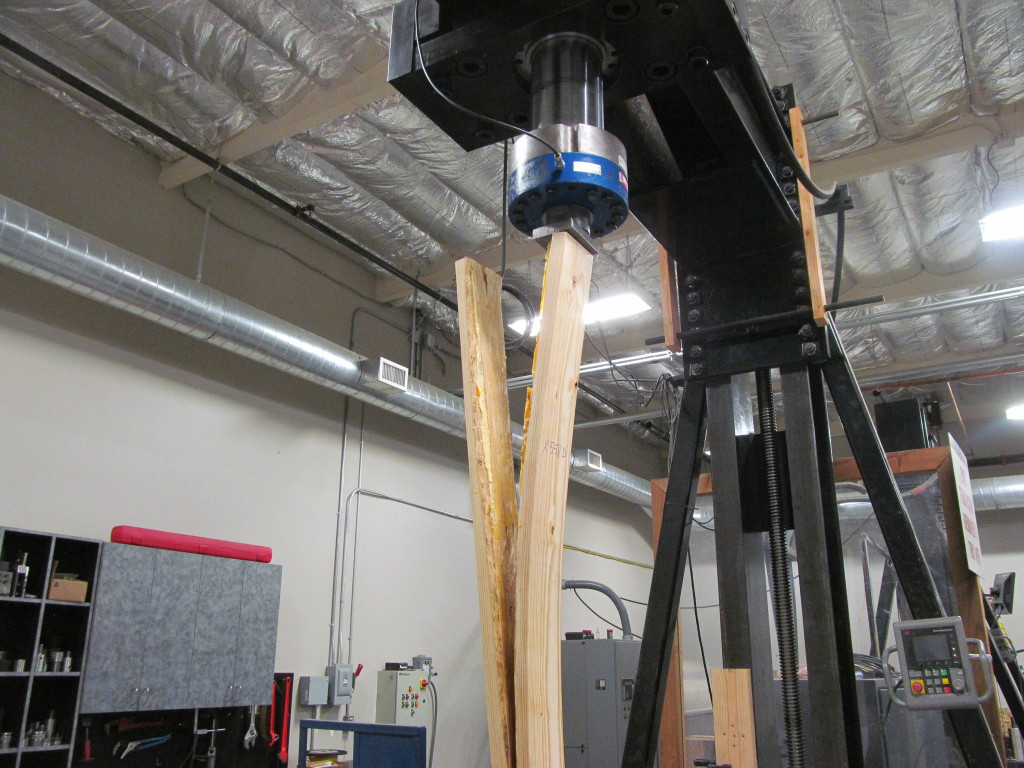
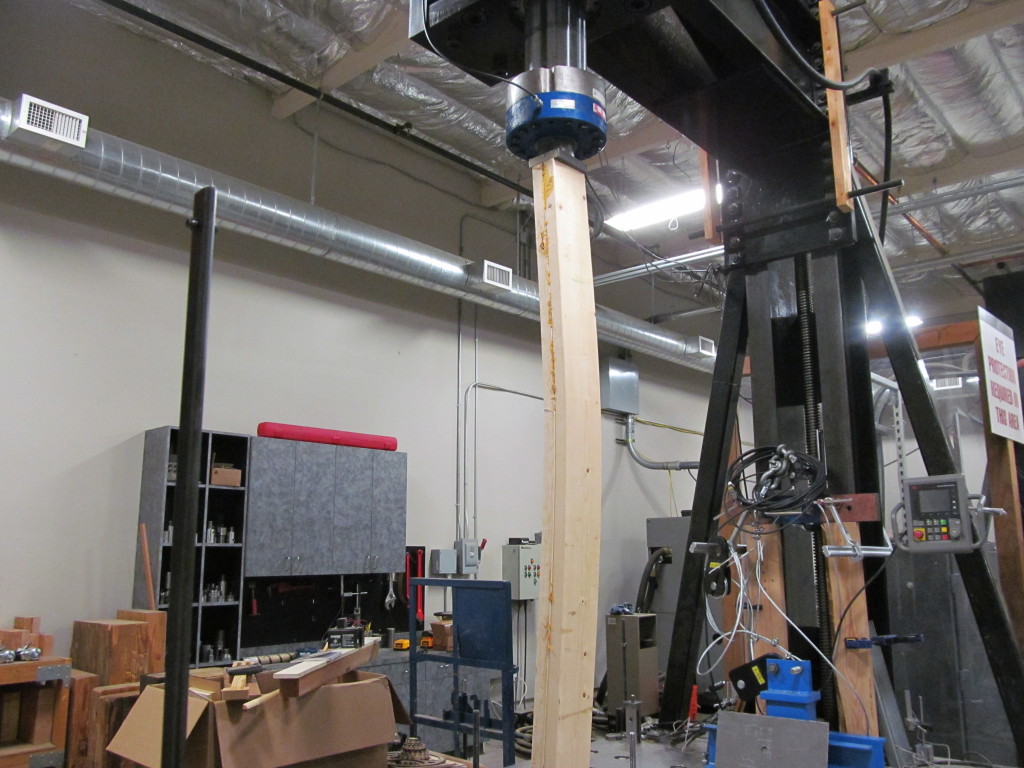
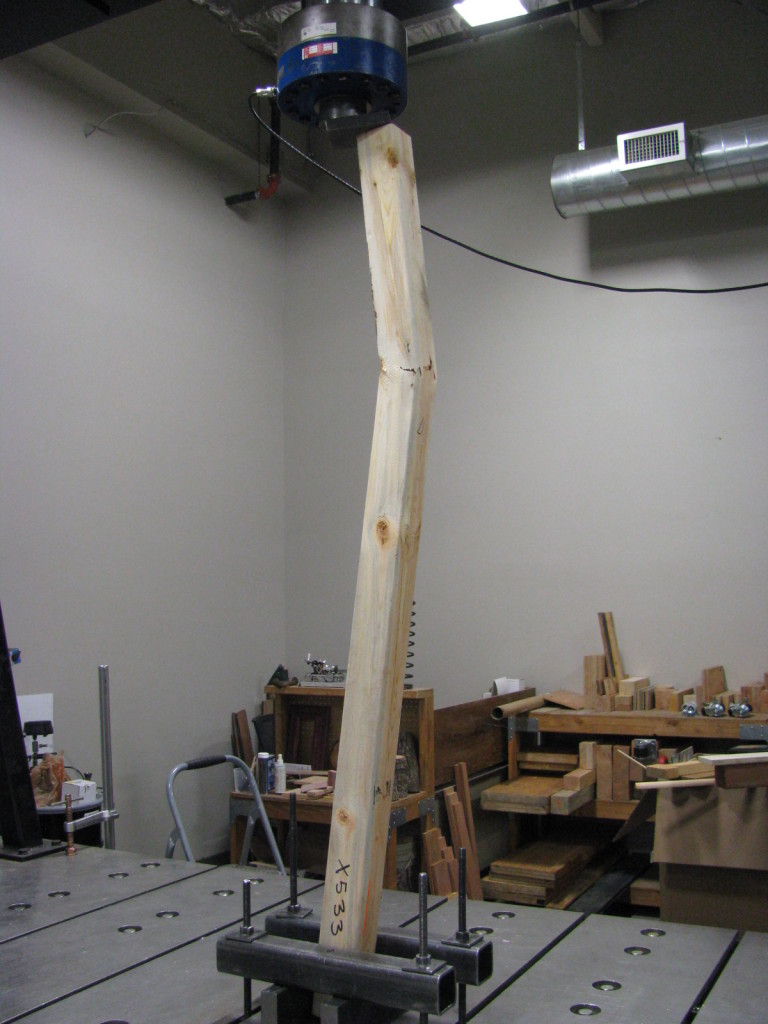
Our test presses have compression capacities ranging from 100 kips to 200 kips. While we have tested some really heavy connectors, most of our tests are under 50 kips ultimate load. The built-up post testing was exciting to watch as loads got as high as 180 kips and had some very dramatic failures. More fun than the bowling balls, but a little more difficult to contain the explosions.
I have no numbers to share from this testing, as design procedures exist in the code for built-up posts. A few non-technical things we learned from doing this built-up post testing include:
- Short posts can take a lot of load
- Regular wood glue requires careful application to get good bond over the full area of a board
- We haven’t mastered glue application
- Posts can explode
- Heavy steel plates go flying when posts explode
Not scientific, but fun to watch. The videos were captured on an iPhone by R&D Lab Testing Technician Steve Ziagos. Steve also blogs about Do-It-Yourself projects on our DIY Done Right blog. Enjoy the video.



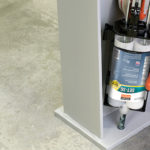
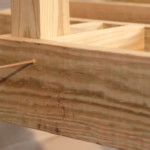

You have to love the iPhone’s “Slow Motion” video mode. Makes some really cool video of failures.
If you ever publish results, I would be very interested in them (yes, there are published values, but you’ve shown in regard to withdrawal values of nails, they aren’t always accurate*). Also, the difficulty in mastering glue poses problems in the field as well. If you have trouble mastering it in the lab, obtaining consistent results in the field is also going to be problematic. It is a good thing to keep in mind.
*http://seblog.strongtie.com/2013/10/why-your-nds-nail-calcs-could-be-wrong-and-what-you-can-do-about-it/